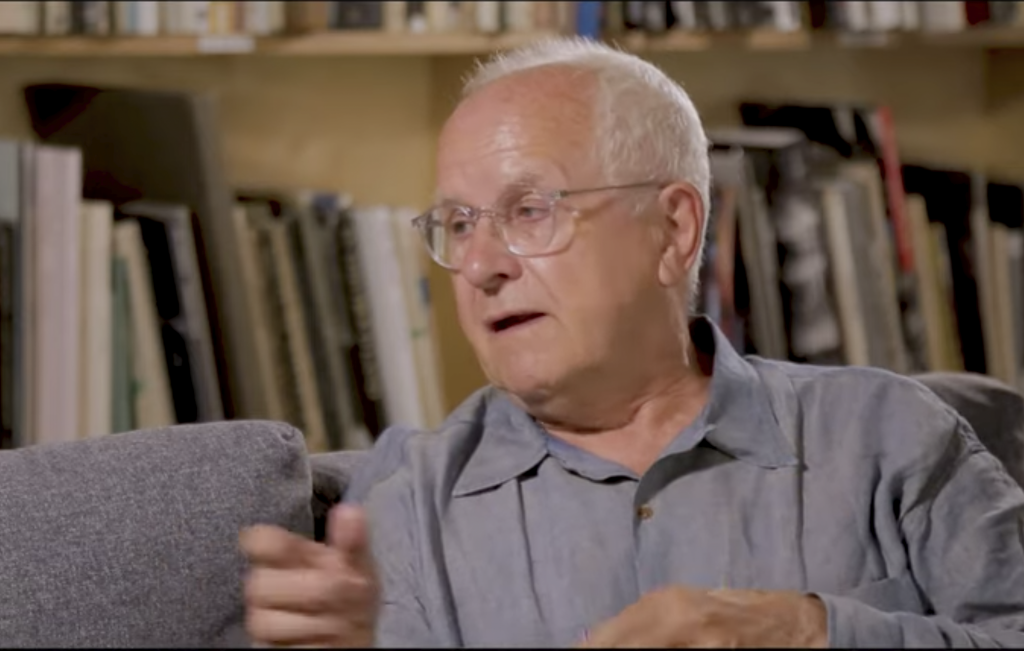Sofa Sessions: Conversations with Martin Parr – Chris Killip
This Sofa Session – coinciding with The Station exhibition, on display at the Martin Parr Foundation 20 SEPT to 24 DEC 2020 – is dedicated to the life and work of Chris Killip (1946-2020). Chris talks about his working process and the values that underlie his photographic practice. He touches upon his transition from making portraits using a 5×4 camera and tripod on the Isle of Man, to photographing the industrial North East of England using flash in the daytime. He elaborates on the value of spending extended periods of time getting to know your subjects and the re-discovery of The Station images by his son Matthew, which led to the current exhibition.
Chris Killip was a prominent British photographer known for his socially conscious black and white images, particularly those captured during the industrial decline of the 1970s and 1980s in England’s northeastern region. He was born in Douglas, Isle of Man, on July 11, 1946, and studied photography at the London School of Printing before embarking on a successful career that spanned several decades.
Killip began his photographic career in the mid-1960s, working as a freelance photographer for various magazines and newspapers. During this time, he also began to develop a personal interest in the communities and people of the northeast region of England, which would become the subject matter of many of his most famous works.
In 1975, Killip was awarded a grant by the Northern Arts Association to document the lives of working-class communities in the northeast, and this project would eventually become his most well-known body of work, In Flagrante. The photographs in In Flagrante, which were taken over a period of seven years, offered a bleak and unflinching portrayal of the harsh realities of life in the region during a time of economic decline.
In Flagrante captured the social and economic conditions of the northeast with an unyielding honesty, portraying the effects of unemployment, poverty, and social isolation on the communities Killip encountered. Many of the images depicted scenes of industrial decay and desolation, with abandoned factories and empty streets serving as backdrops to portraits of working-class men and women struggling to make ends meet.
One of the most striking aspects of In Flagrante was the sense of intimacy and empathy that Killip brought to his subjects. Rather than portraying them as passive victims of economic circumstance, Killip captured the dignity and resilience of his subjects, highlighting their individual struggles and triumphs in the face of adversity.
In addition to In Flagrante, Killip’s other notable works included his early portraits of British youth culture, such as The Last Ships, a series of photographs depicting the last days of shipbuilding in the northeast, and Pirelli Work, which portrayed the lives of factory workers in Derbyshire.
Throughout his career, Killip’s work was recognized and celebrated both nationally and internationally. He was awarded numerous awards, including the Henri Cartier-Bresson Award in 1989 and a Guggenheim Fellowship in 2014, and his work was exhibited in galleries and museums around the world, including the Museum of Modern Art in New York and the Victoria and Albert Museum in London.
Despite the critical acclaim and success that he achieved, Killip always maintained a humble and grounded approach to his work, emphasizing the importance of empathy and connection in photography. He spoke often about the need to connect with one’s subjects on a personal level, to understand their experiences and struggles in order to capture them authentically.
In his later years, Killip turned his attention to teaching and writing about photography, sharing his wealth of knowledge and experience with the next generation of photographers. His influence on the field of documentary photography cannot be overstated, and his legacy continues to inspire photographers and artists around the world.
Chris Killip passed away in 2020, leaving behind a body of work that stands as an indelible mark on the field of documentary photography, particularly in his powerful and unflinching portrayal of working-class communities during a time of economic decline. His work, including In Flagrante, remains a testament to the power of photography to capture the human experience with honesty, empathy, and dignity. Through his work, Killip showed us the importance of connecting with our subjects on a personal level, of seeing and understanding their struggles, and of using our craft to tell their stories in a way that is both authentic and respectful. His legacy as a photographer lives on, inspiring generations of photographers to follow in his footsteps and continue the important work of using photography to bear witness to the world around us.
